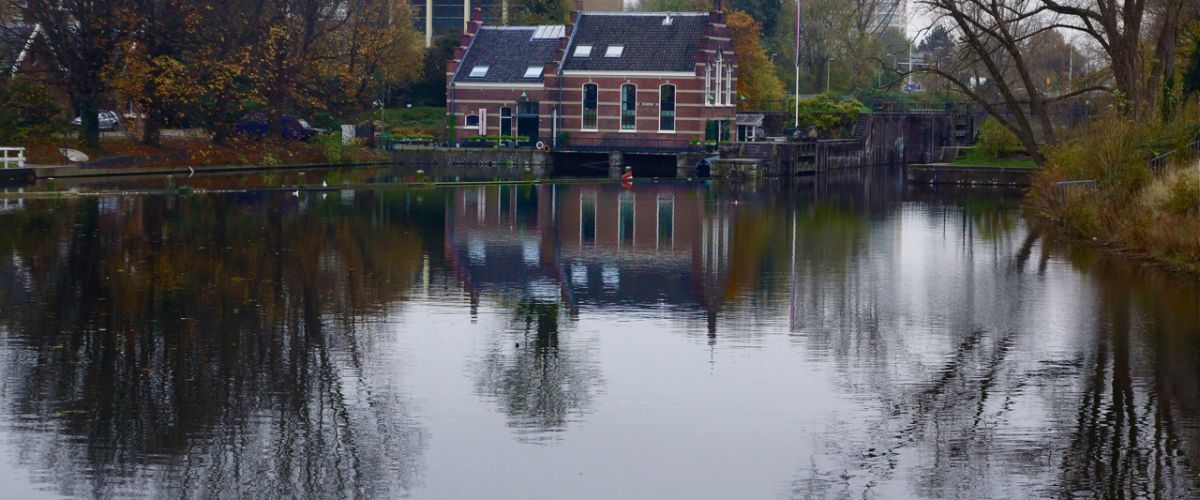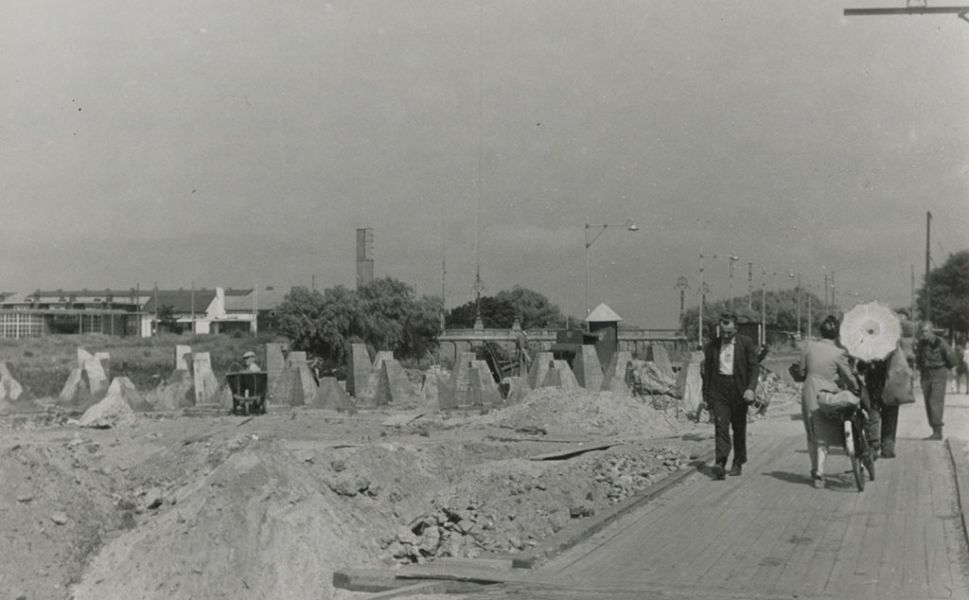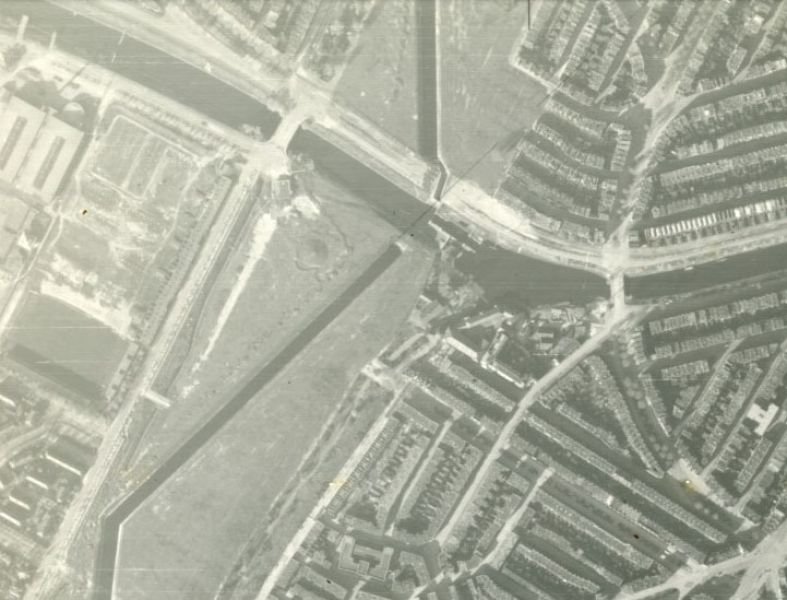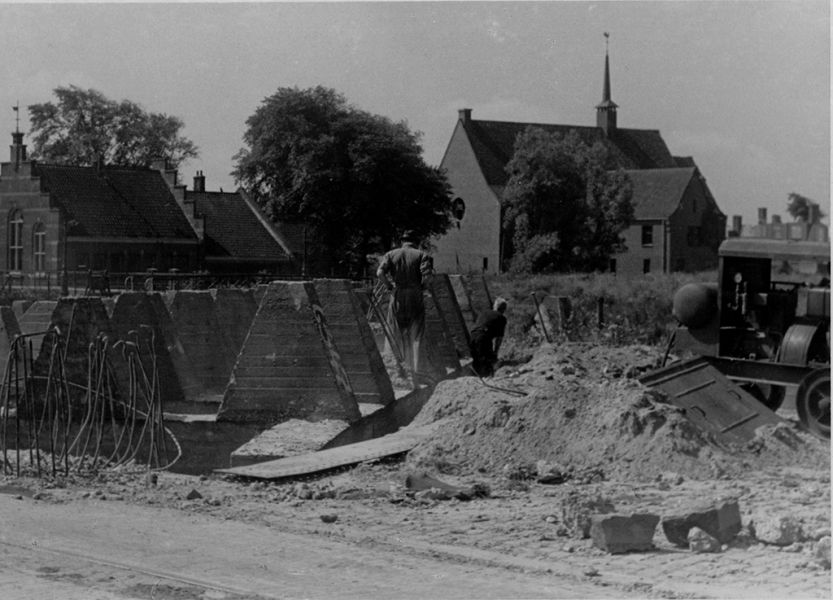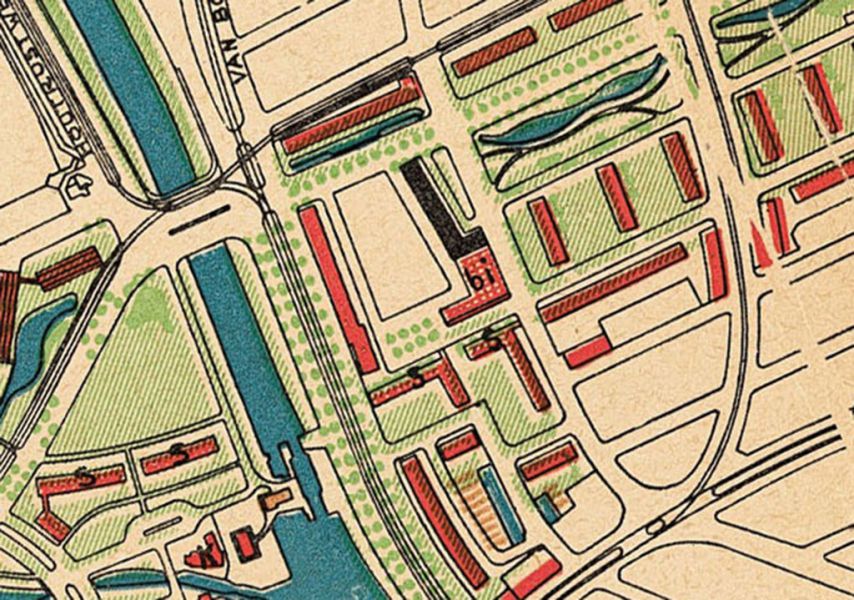The sluices saved the church
By 1943 this area was a stretch of desolate wasteland. The housing in the immediate area had been demolished and the residents accommodated elsewhere.
Conradkade was one of the twelve official entries to ‘Fortress Scheveningen’ and could be sealed off with iron bars in the road surface and sliding iron barriers. The canal, dug in 1888 to drain polluted water from The Hague’s city centre canals into the North Sea, interrupted the zigzag anti-tank ditch that ran from Kijkduin to Zorgvliet. Concrete dragon’s teeth on its banks were designed to prevent it from forming a weakness in the fortifications.
The Houtrustkerk, a church built beside the canal in 1936, was miraculously unharmed by the construction of the Atlantic Wall. It is said that the Germans feared damage to the sluices if the church were dynamited. They were – quite wrongly – afraid that this would then make the city vulnerable to storm surges.
 Herinneringsroute Atlantikwall Den Haag
Herinneringsroute Atlantikwall Den Haag
